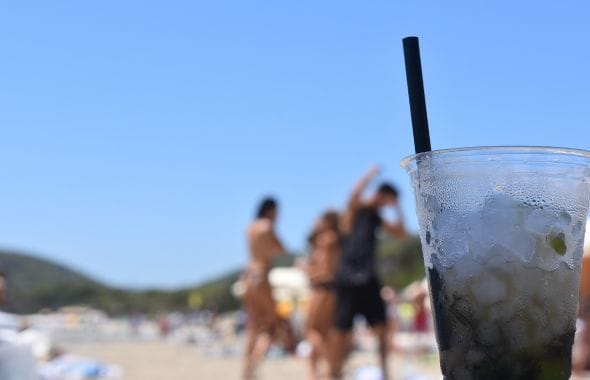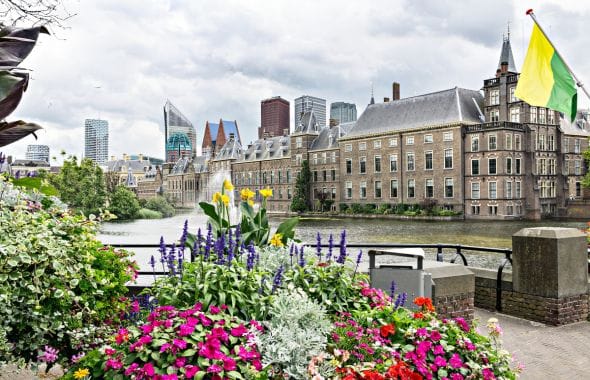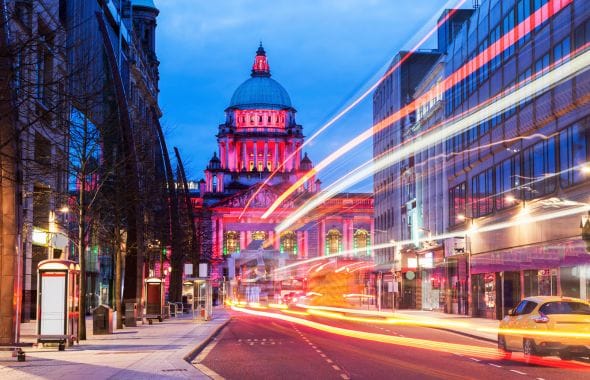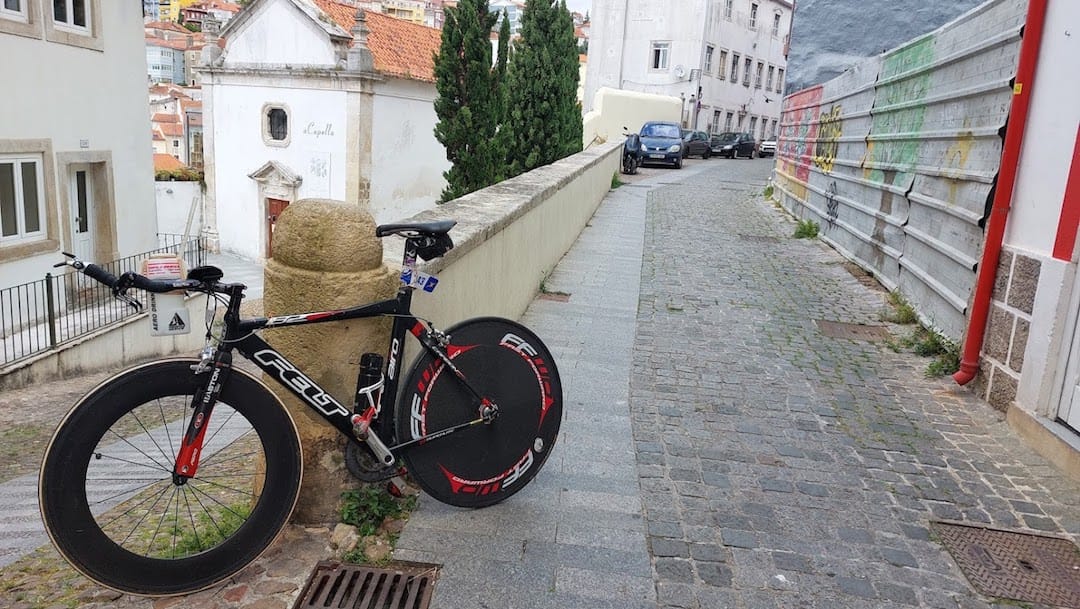
I’ve always enjoyed train travel and much prefer it to flying.
But working in the travel industry as a ski journalist I would usually take several flights per year, in addition to family holidays.
I’ve been aware of the carbon impact of my travel for a while now, and a few years ago I set up Ski Flight Free to showcase the ways you can get to the slopes without flying. Inspired by the Flight Free UK movement, I took the challenge not to fly at all in 2024.
Not flying is very straightforward when it comes to skiing. More complicated is my hobby of triathlon, which involves travelling to less straightforward places, and taking a bike with you.
Euro or World Championship races could be anywhere. I’ve missed out on possible races in Canada, Australia, Estonia and Turkey because of not wanting to fly, so when I qualified for this year’s European Duathlon Championships in Portugal, I wanted to try and make it happen.
Having had a bad experience with a bike shipping company in the past, I decided not to let it out of my sight this time. However, taking a bike on and off all the trains that would take me from Brighton to Coimbra in Portugal (about halfway between Porto and Lisbon) wasn’t realistic. As well as it taking about three days in each direction, I would have to change trains multiple times, at least in London, Paris, Madrid and Santiago, and each operator has different requirements when it comes to taking your bike on board.
But opportunities to represent your country don’t come very often, so I was determined to come up with a solution. I settled on the Brittany Ferries crossing from Portsmouth to Santander. I could get to Portsmouth by train and bike, then hire a car in Spain, chuck my bike on the back, and drive to Portugal for the race.
The carbon cost of the journey came out at 380kg CO2e – not insignificant, but around half the carbon cost of 710kg CO2e generated by a flight.
Bicycles are classified as vehicles by Brittany Ferries and so you board with the cars, trucks and motorbikes, rather than foot passengers. I felt slightly exposed as I lined up alongside the lorries, but I was soon ushered to a group of cyclists waiting to board.
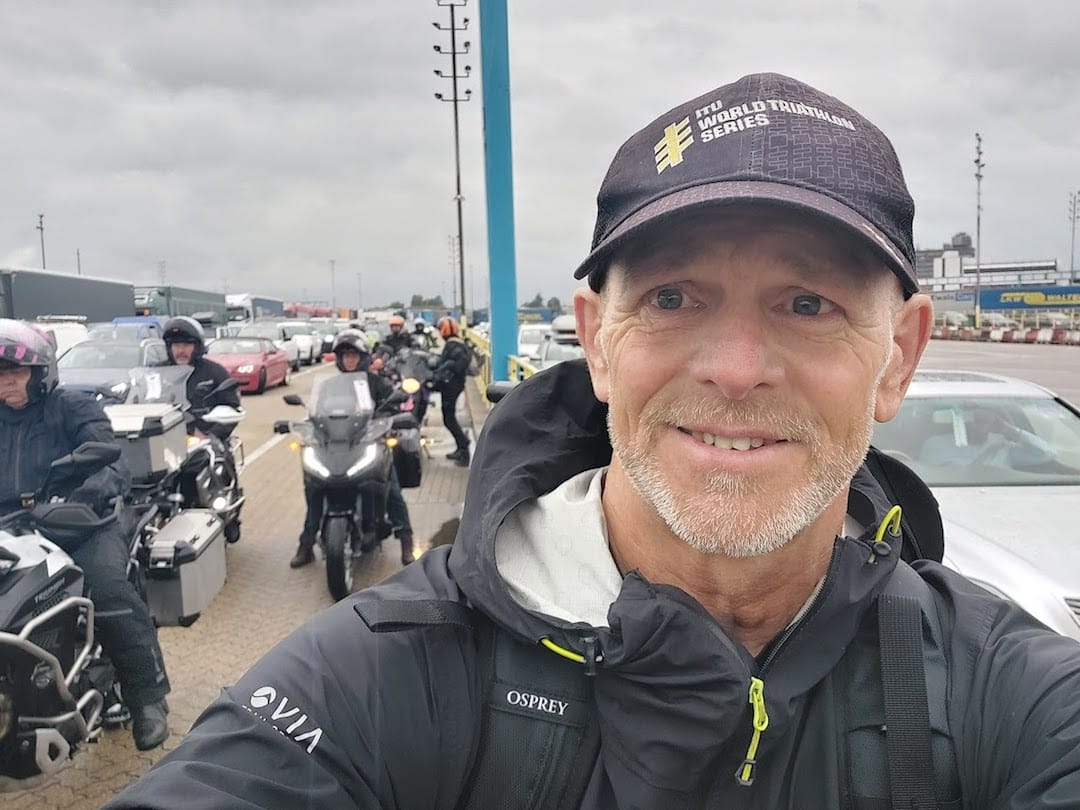
There was a sense of camaraderie, and my first-timer fears were eased by more experienced riders. We were soon beckoned on board towards ferry staff who secured our bikes, tying them to designated areas on the walls of the vehicle deck.
I’d booked a cabin for the 36-hour crossing, which was comfortable, with an ensuite shower and toilet, plus TV featuring all the main British and French channels, and a good choice of films to stream for free. Arriving in Santander bang on time at 8am, it was a short ride to the car hire office, where I sat in the morning sunshine, enjoying some breakfast tapas while I waited for it to open.
It took six hours to drive down to Coimbra for the race, which went well – I was 17th in my age group, which is pretty good for a high level race like this. As expected, most other people had flown to take part. I wish there was more promotion of non-fly options, but it’s not highlighted. I’m part of the Green Runners network, who lobby for more sustainable activity by brands and race organisers.
My return ferry was from Bilbao, 100km east of Santander, and I had a bit more time for the journey, so I stopped in the beautiful historic city of Salamanca on the way, which was well worth it.
After dropping the hire car at the railway station in the centre of Bilbao, I headed off by bike to the port. I had plenty of time to cycle the hour journey before the ferry left, and it started well, on perfect bike paths alongside the river and past the iconic Guggenheim museum.
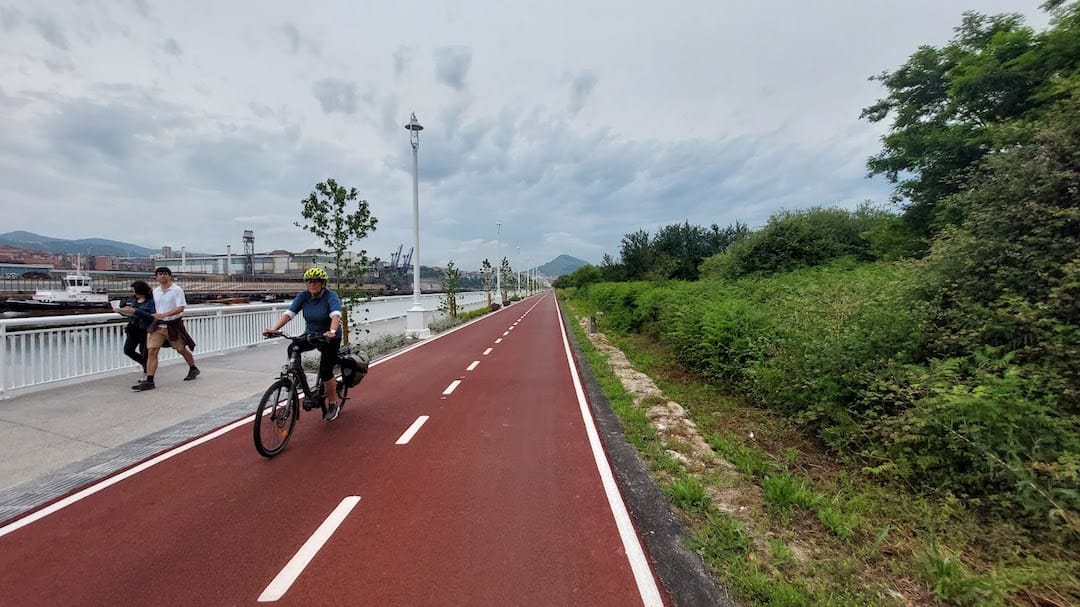
But as I moved further out of the city I became worried I wasn’t going to make it to the port in time. Google Maps is brilliant a lot of the time, but on this occasion it ripped my nerves to shreds!
Firstly, what on the map had looked like a bridge turned out to be the Vizcaya Transporter Bridge, where vehicles and passengers are loaded on to a gondola then swung across the water to the other side. I didn’t know I would need a ticket, and I missed the crossing trying to work out how to buy one, then it was another eight minutes before the gondola returned for its next load. I started to panic that I would miss my ferry. I was too stressed to appreciate the bridge – one of only eight transporter bridges in the world!
Secondly, once on the other side, Google’s route took me into the industrial sector of the docks. Weaving past containers, at one point I was held up for five minutes by a (very long) freight train, all of which made the panic worse.
I needn’t have worried. I was sweaty, hot and flustered, and arrived at the ferry check-in less than 30 minutes before departure, but the team was very relaxed, with several rows of cars and motorhomes still waiting to board. Having rushed all the way there, I ended up having to wait another ten minutes!
The return crossing took one night and two days, and I bought the Wi-Fi package, which was extremely good, getting a full day of work in, plus a good night’s sleep, before arriving at Portsmouth on the afternoon of the following day.
The trip cost more than flying: the ferry was £260 return with a bike, and I also paid £260 for the cabin. However, if you look at this as being three nights’ accommodation, it makes it seem better value!
After all, the advantage of ‘slow travel’ is the holiday starts with the journey.
So, would I do it again? Absolutely.
Itinerary:
- Train Brighton to Portsmouth
- Ferry Portsmouth to Santander (one day two nights)
- Drive Santander to Coimbra
Return
- Drive Coimbra to Bilbao (via Salamanca)
- Ferry Bilbao to Portsmouth (one night two days)
- Train Portsmouth to Brighton


